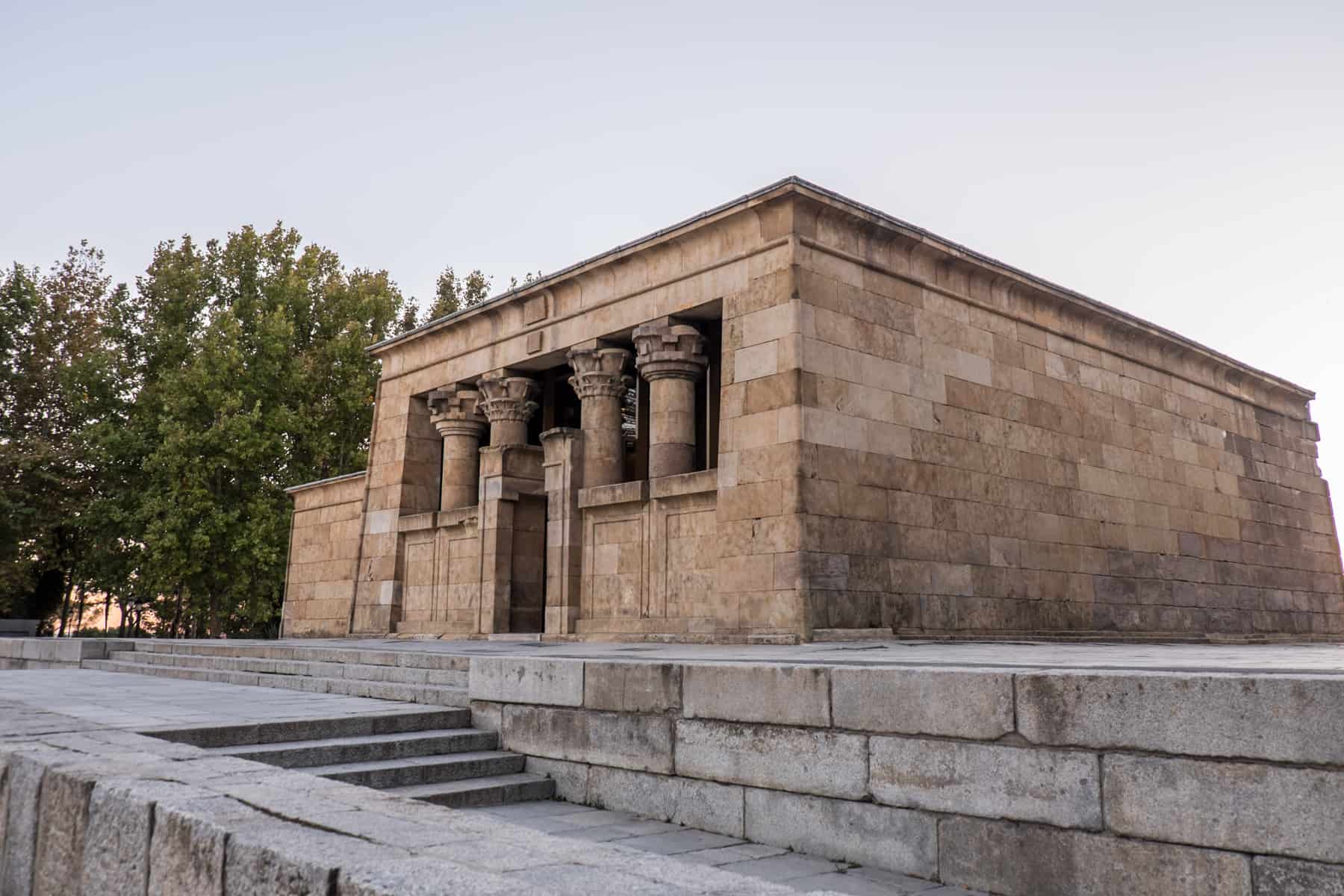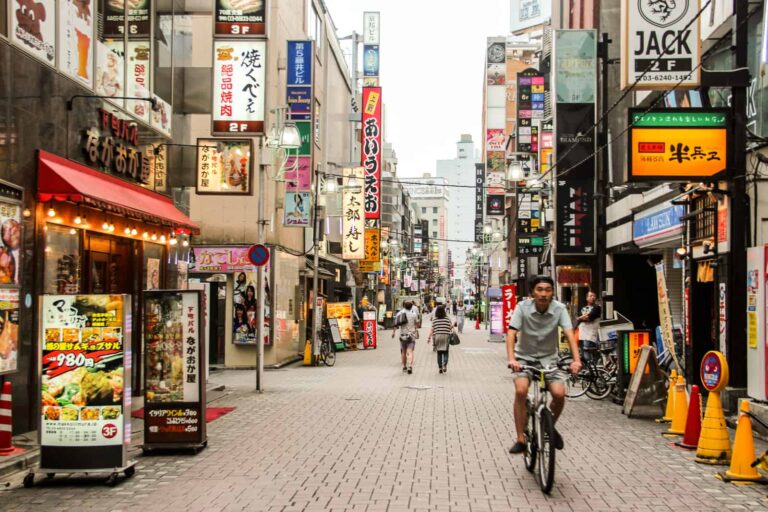Spain is the second biggest country in Western Europe after France. Still, its accessibility via the Renfe ‘Spanish High Speed’ AVE train network makes navigating different parts of the country and getting anywhere from Madrid by train easy. With the trains reaching speeds of up to 350 km per hour, you can travel from Santander on the north coast to Malaga in the south in 8 hours or western Salamanca to eastern Castellón de la Plana in 6. Madrid Atocha is the most common station change – the hub of the high-speed tracks.
Other city highlights include the Cathedral with a Romanesque tower and baroque façade, built between the 11th and 18th centuries, getting lost in the labyrinth of narrow lanes and alleys of the Jewish Quarter, and the magnificent Islamic-modelled architecture of the Arab Baths, built by Christians in 1194. The red iron Peixateries Velles Bridge from 1827 is a famed postcard picture viewpoint in the city.
The Cathedral is a city centrepiece as is the exquisite Plaza de España is a plaza in the Parque de María Luisa. A mix of Islamic and Renaissance designs, this 1928 masterpiece is a symbol of the city known for its grandeur of tiled fountains, opulent bridges and lush gardens. Dedicate at least half a day to exploring the vast landscapes and vivid detail of the stunning Mudéjar architecture of the Real Alcázar of Seville, a 14th-century royal palace built by Muslim Kings.
The best time for this trip, based on optimal weather conditions, are the shoulder ends of May-October, based on all the average forecasts for Madrid, San Sebastian, Girona, Zaragoza, Barcelona, Valencia, Cordoba, Seville, Granada and Malaga.
Visit the Mosque-Cathedral, La Mezquita – the most famed of the four UNESCO World Heritage Sites as a distinguished monument of Islamic architecture, alongside the notable Historic Centre and Jewish Quarter surrounding it. Also included are the excavated ruins of the Caliphate city palace at the foot of the Sierra Morena Mountains, which ruler Abd-al Rahman III had constructed in 929 AD to display his Kingdom’s power. The beautiful domestic courtyards symbolic of Córdoba and its acclaimed Festival of the Patios, which open the private community spaces for public viewing, are a UNESCO Intangible Cultural Heritage of Humanity site.
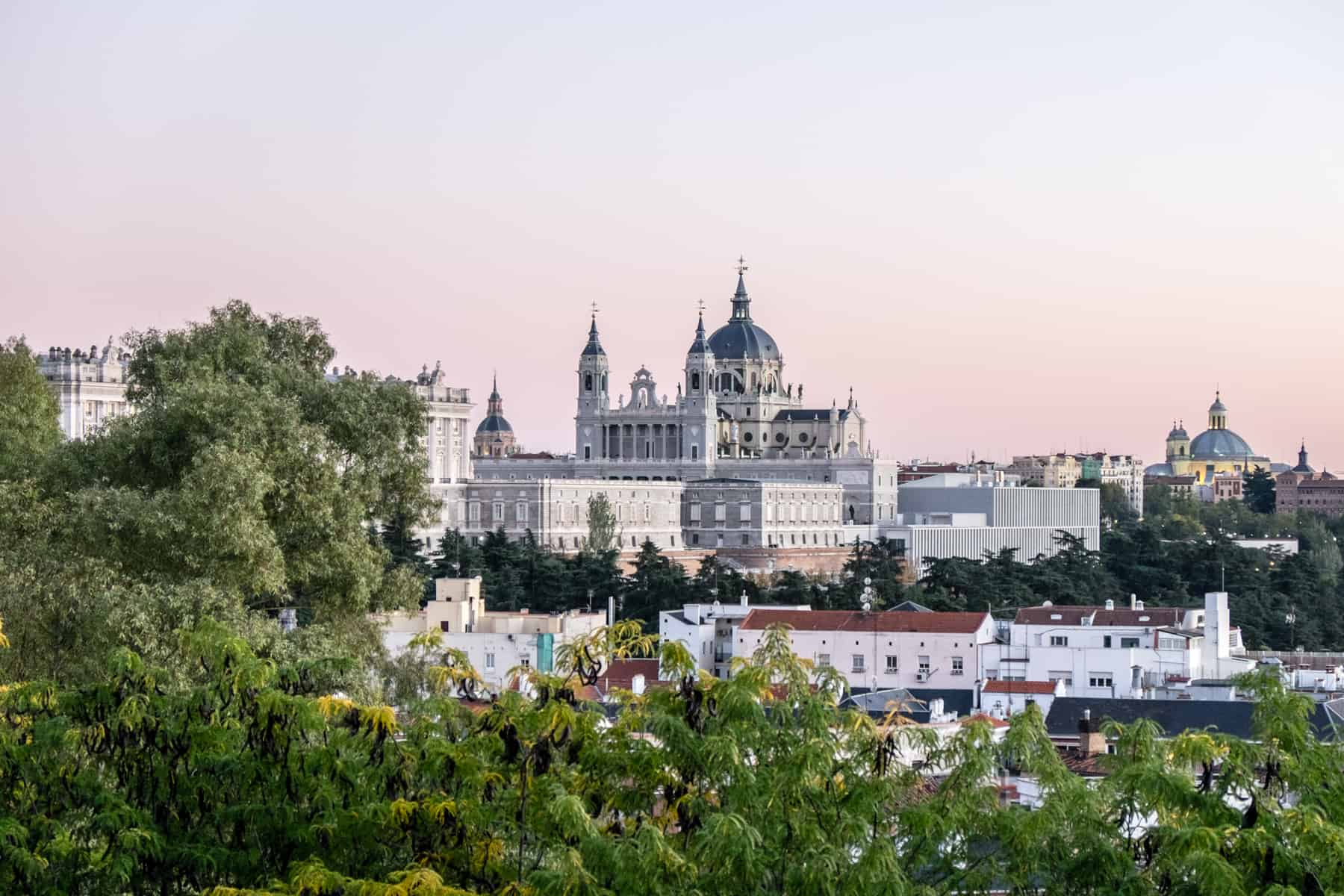
The 11th-century medieval Islamic Ajafería Palace is the most symbolic site to visit. Zaragoza’s UNESCO World Heritage status comes from this display of Mudéjar art native to Aragon – a blend of Islamic and Christian elements when the two faiths coexisted after the Christian Reconquista. Beyond the palatial centre of Zaragoza, best viewed from the heights of the Roman Catholic Cathedral-Basilica of Our Lady of the Pillar, you will soon see that street art paves the way for the city’s other persona.
Madrid City Sightseeing
Is Madrid worth visiting? The dishevelled elegance of the capital jostles with the touristic and coastal Barcelona for visitor attention; still, I don’t think it should be bypassed, especially if you thrive in the momentum of big city life and having expansive ground to uncover.
You need ample time (three-four days) to explore the remaining threads of medieval history, the Renaissance Habsburg to the 19th-century neoclassical architectural styles, alongside the art museums, markets and the grungy and bohemian neighbourhoods. Madrid is a heady mix of grandiose sites and local subcultures, fuelled by a buzzing tapas bar culture, day and night. A walkable city, the best way to get around Madrid is by metro.
Valencia is a city full of accolades. Start in the Old Town’s cobblestoned labyrinth (Ciutat Vella). The historically layered Roman, Gothic, Baroque Cathedral protects the Holy Chalice and the Silk Exchange (La Lonja) World Heritage Site displays why it is one of the famous civil gothic monuments in Europe. The 1000-year-old neighbourhood of Barrio del Carmen, whose Muslim and Christian walls whose gates still stand, preserves some of the city’s iconic medieval structures like the Serrano and Quart Towers.
Highlights of Madrid
One of the most popular long-distance trips from Madrid by train is to Barcelona, the coastal capital of the Catalonia region. I’ve visited the city twice, choosing new major sites to peruse without rushing, savouring long boulevard-strewn walks, Barcelona bike tours and beach days, and spending long evenings sipping jugs of sangria in a local neighbourhood square. Coupled with Madrid, you’ll need some big city steam.
From bustling Madrid to the charming, flamenco dancing famed Seville, this city is where the colourful, artistic streets converge with the delicate, classical architecture of the open squares and boulevards. As Andalusia’s capital, and another of the most popular trips from Madrid by train, it will most likely be your introduction to the region too.
READ MORE:
More than just a big city trip deserving of your attention, Madrid is also the epicentre for wider Spain travel. A capital city that sits in the middle of the country, it’s the optimal starting point to journey in any direction and explore one or more of Spain’s 17 regions.
Disclaimer: This article was created in collaboration with the Tourism Office of Spain as inspiration for when we can travel again. For further Spain travel advice and help planning your trip, visit Spain’s official tourism portal. Borders of Adventure maintains full editorial control of the content published on this site.
The Temple of Debod is a 2nd-century Egyptian temple set within the elevated Cuartel de la Montaña Park and the prime spot for watching Madrid’s sunset. The Egyptian government gifted the temple to save it from being submerged in the construction of the Aswan Dam.
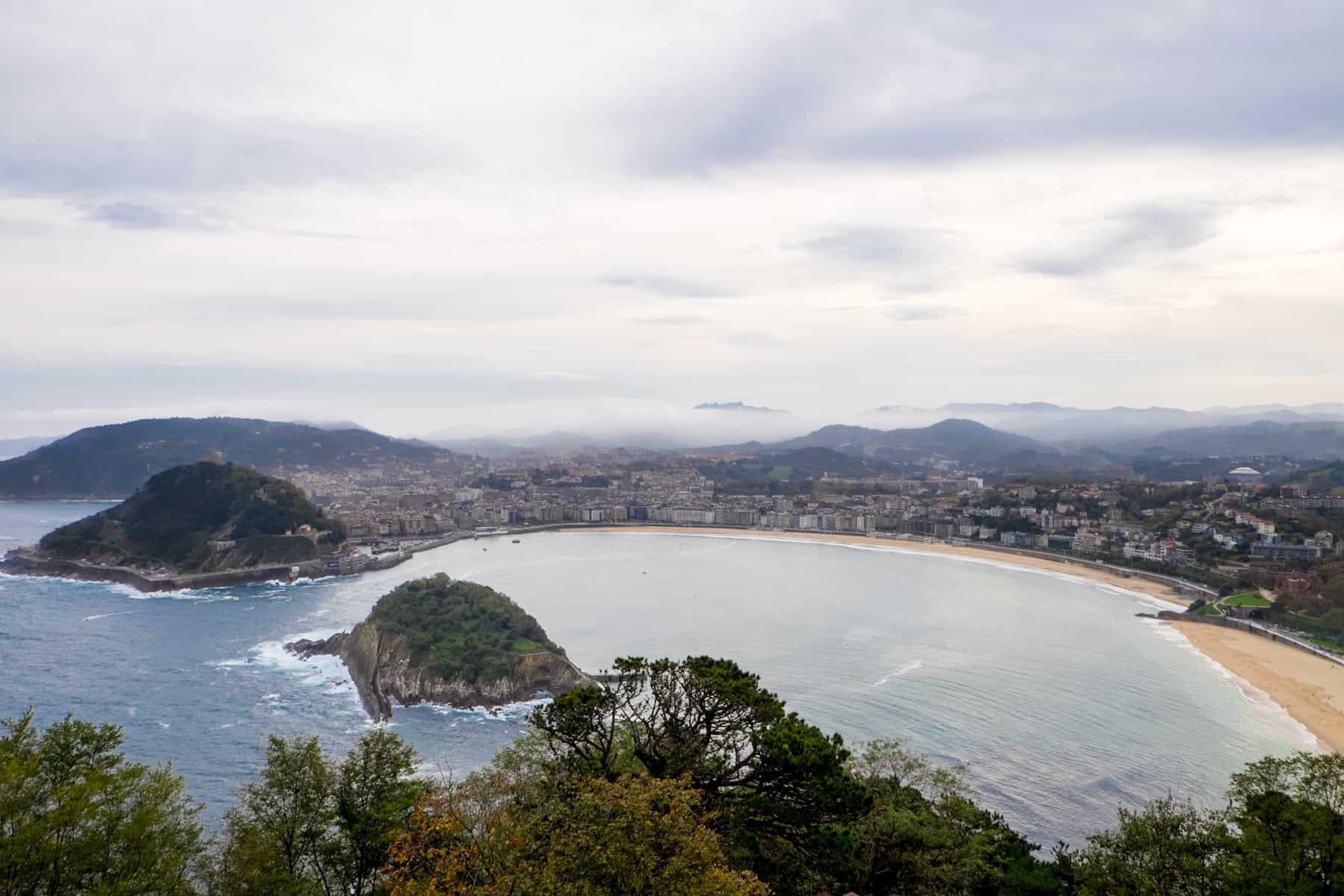
Adjacent to Centro Granada, spend time getting lost in the streets of Albaicin, granted UNESCO World Heritage status for its traditional Moorish architecture and courtyards and kicking back in the hum of the atmospheric Arabic teahouses.
The UNESCO World Heritage city of Valencia is one of Spain’s oldest, a trip that combines a heritage of 2,000 years with a Mediterranean climate and fine powered sand beaches.
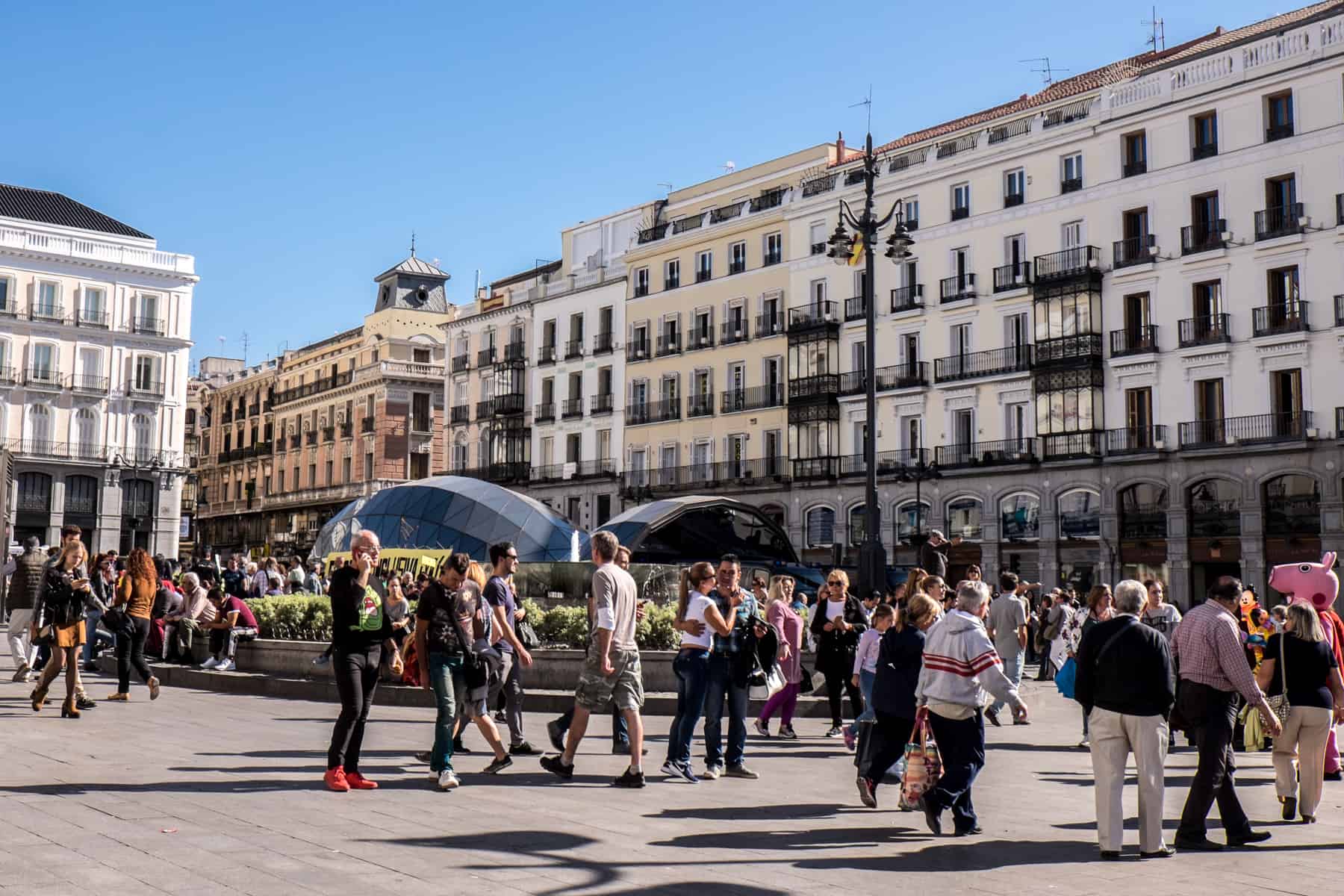
Madrid’s Royal Palace (Palacio Real de Madrid) is the largest in Europe, with over 3,000 rooms. Daily tours take you through the highlights, including the Main Staircase and the Royal Gallery. A stroll in the adjacent Sabatini Gardens provides green-set views of the palace, and the public viewing Changing of the Guard takes place every Wednesday and Saturday.
Places to Go in Spain From Madrid by Train
Madrid to San Sebastian
The fashionable city of Malaga on the golden sand southern coastline of the Costa del Sol is one of the world’s oldest cities. Its pre-historic 3,000 years of history go back to its founding by the eastern Mediterranean Phoenicians in the 7th-century BC. Today, Malaga is best known as the birthplace of the revered artist Pablo Picasso.
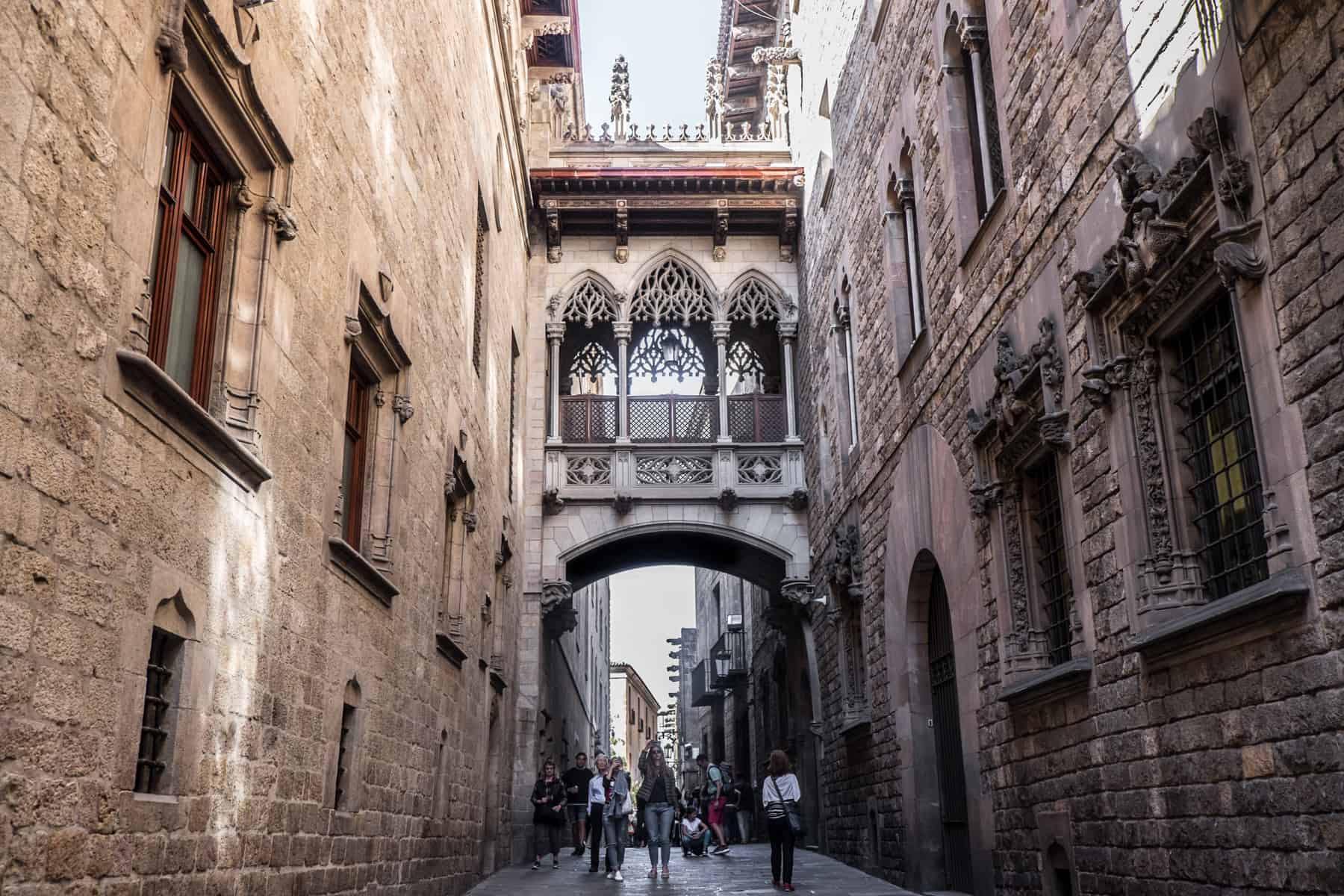
Art enthusiasts can follow Picasso’s trail at number 15 Plaza de la Merced – the building where he was born in 1881 – before heading to the 16th century Renaissance beauty of Buenavista Palace, home to the Museo Picasso Málaga (Malaga Picasso Museum). Break up a tour of Malaga’s highlights with a trip to one of the 15 city beaches.

History stands at the base of Gibralfaro hill with the preserved palace structure of Alcazaba of Málaga, a Muslim monument partially constructed in 1057 using stone materials from the 1st century AD Roman Theatre that stands in front of it. The hilltop Castillo de Gibralfaro Castle was built to protect the Alcazaba, captured in 1487 by the Catholic Monarchs during the Reconquista that drove out the Moors and used as a residence by the King. Visitors also come here for the sweeping views over the city. Monuments from the Christian era of Malaga include monasteries and basilicas and the commanding Renaissance allure of the Malaga Cathedral (Catedral Nuestra Señora de la Encarnación).
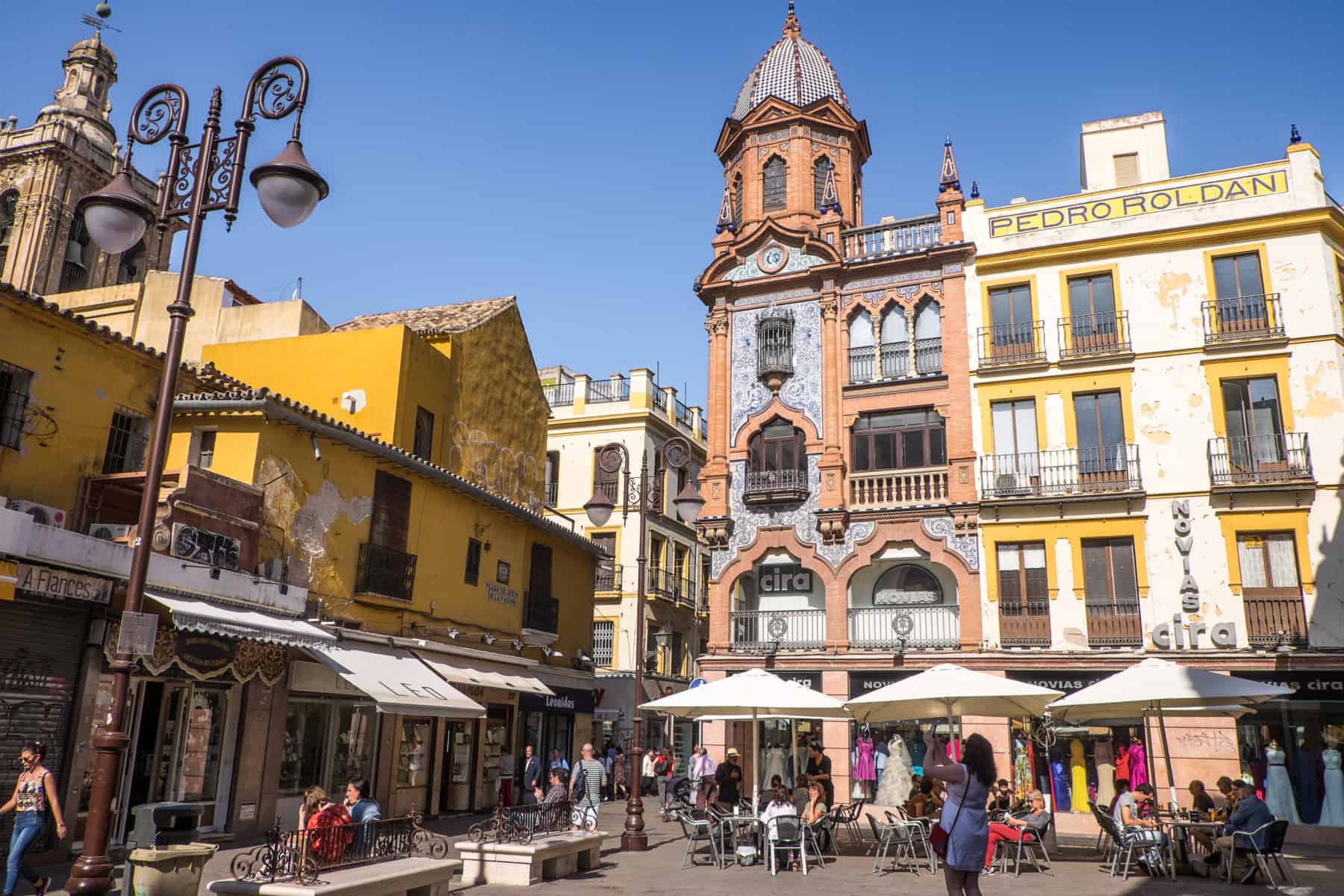


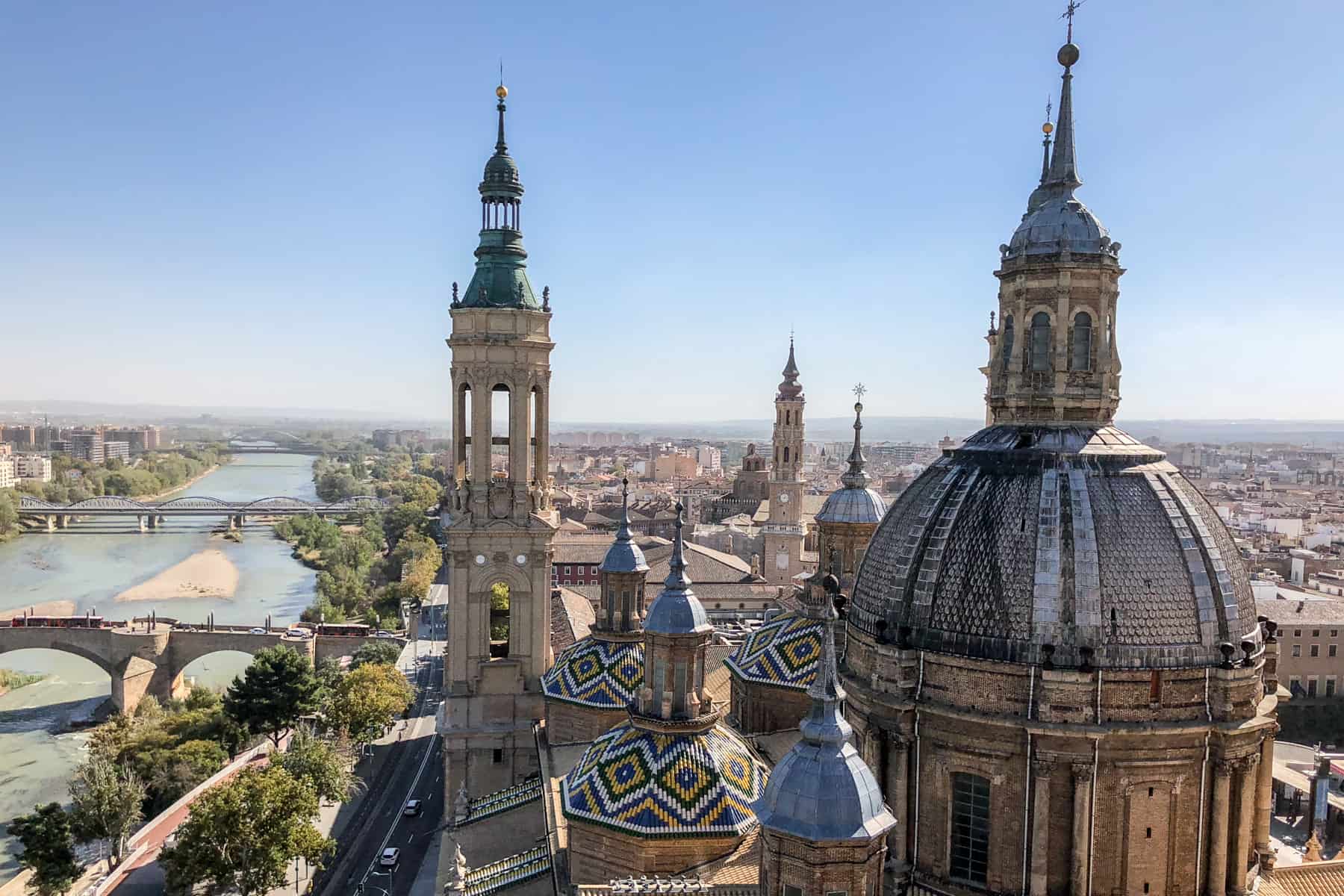
Photos of Malaga by former local David Brennan and an image of Valencia used with permission from the Spanish Tourist Office in London for this campaign.
Madrid to Barcelona

I spent most of my time scratching the surface of Madrid’s neighbourhoods. It’s personally how I like to understand the intricacies of a city. Malasaña and Chueca are the trendy, stylish and boho areas, Lavapiés is the edgy, street art-filled multicultural neighbourhood, and La Latina is the centre of the Tapas bar culture. Barrio de las Letras (the Literary Quarter) is a compact artist hub where writers from the Spanish Golden Age once resided. Los Austrias is the historic neighbourhood where you’ll find Plaza Mayor and San Miguel Market.
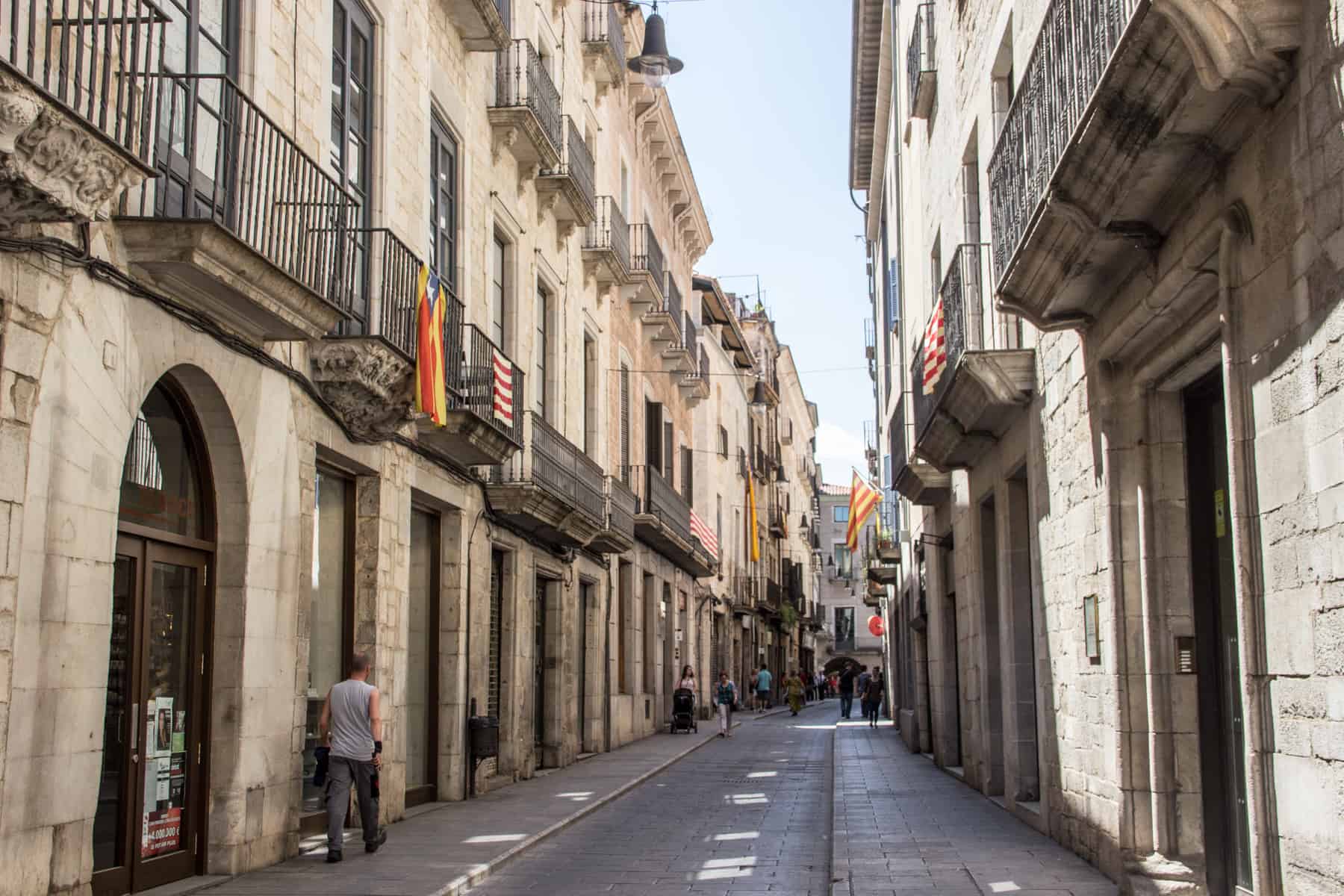
In the Historical Centre of Granada city, Catholic architecture takes centre stage, including the Renaissance masterpieces of the Cathedral of Granada and the Monasterio de San Jerónimo, alongside the baroque Basilica San Juan de Dios and the Capilla Real (Royal Chapel) mausoleum of the last Catholic Monarchs. Admire the cave houses of Sacromonte and join the buzz at Campo del Prínicpe Square in the Jewish neighbourhood of Realejo-San Matias and indulge in the tradition of free tapas in Granada, for which a complimentary morsel is given with every drink ordered.
Granada’s icon is the fortified Arab citadel of the Alhambra, perched defiantly in the Sierra Nevada Mountains. An opulent tiered, tiled and terraced complex of palaces, courtyards and gardens, it is preserved as one of the finest examples of Islamic architecture on the continent.
Madrid to Valencia
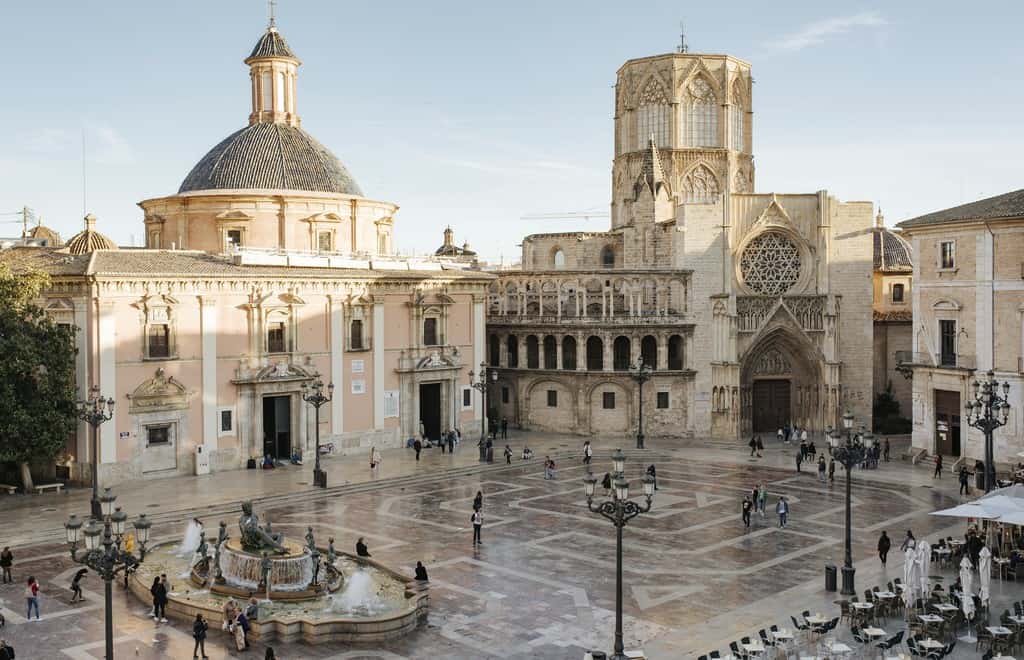
The 19th century El Retiro Park (Parque de El Retiro) is the most beautiful and famous park in the city, with a boating lake, monuments and botanical gardens. It’s also close to the Atocha train station. The striking white crown-like spired Cybele Palace (Palacio de Cibeles) stands at one end of the park’s exterior.
Things to Do in Girona – Inside the Historical Secret of Spain.
Plaza Mayor square is outlined by the pretty arched porticos of its market place past – once the heart of Old Madrid when it first became a capital during the reign of the Habsburg King Phillip III. Today’s bustling square is the Puerta del Sol, whose semi-circular thoroughfare is the junction for some of Madrid’s busiest streets. It was once the site of an old city gate and the starting point for all the major roads in Spain.
Train Stations: Madrid’s main train station is Madrid Atocha (Madrid Puerta de Atocha). It is also the largest railway station in the city, the central station for the high-speed AVE trains and home to a large botanical garden – a tropical greenhouse in the capital.
Madrid to Córdoba
A trilogy of cultures from its founding as a Roman city to Arab conquest and Christian rule, the golden stoned Córdoba is an ancient architectural marvel. In preserving this legacy, Cordoba holds the title of the first city to have four UNESCO World Heritage Sites – more than any other city in the world.
Art enthusiasts could spend their entire time engrossed in the city’s 50 museums, of which around half are art galleries. If you choose just one, then The Prado Museum (Museo Nacional del Prado) is the most world-renowned and locally famed. I took a guided tour of El Prado for an introduction to this treasure chest of European masterpieces spanning the 12th to the 20th centuries.
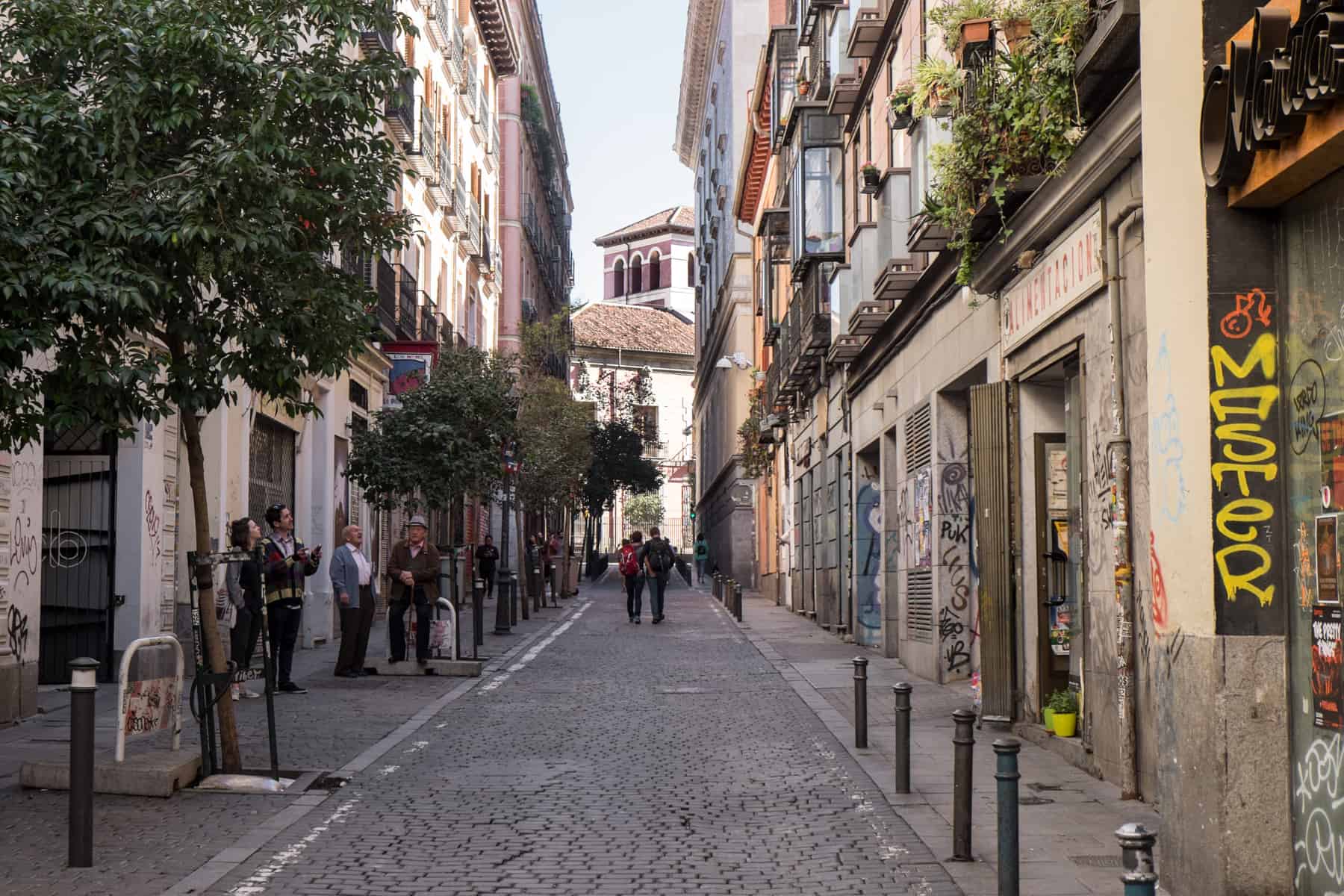
Madrid to Seville
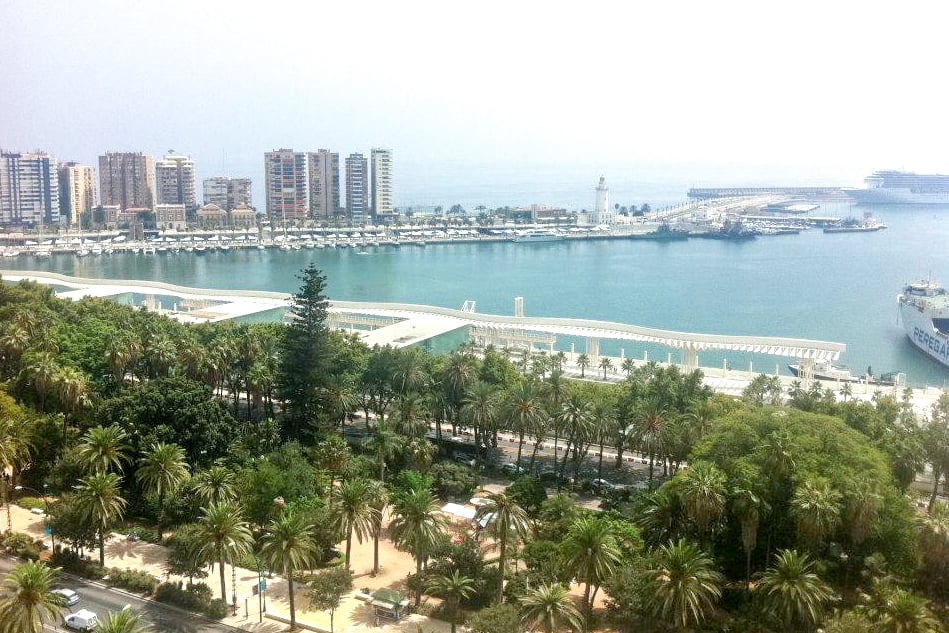
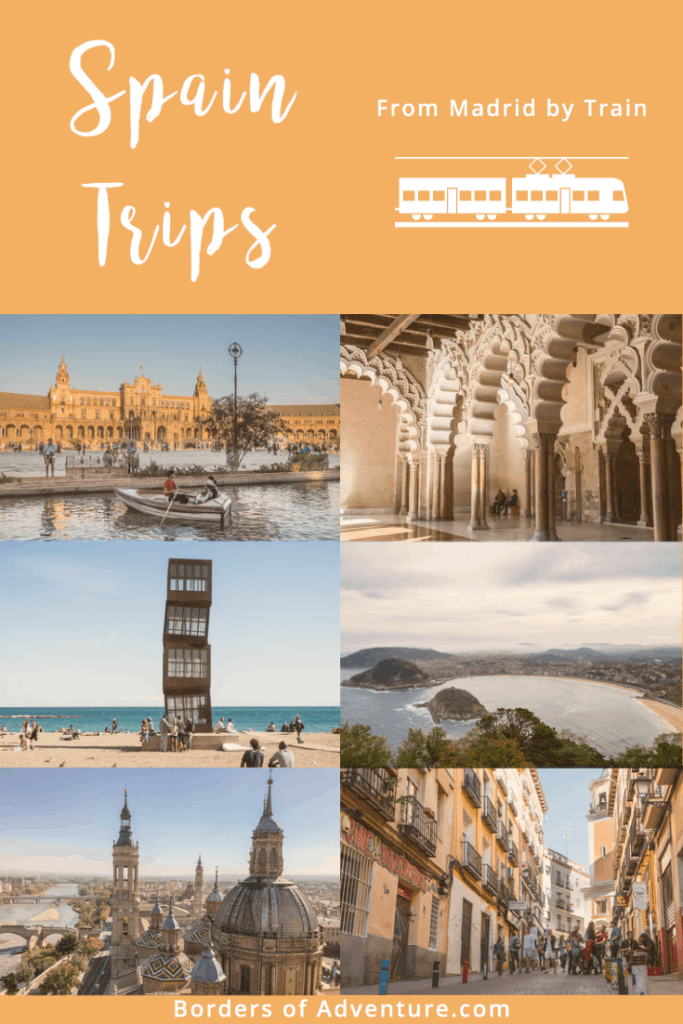
I can’t wait to get back on the (rail) road when we can travel again and head south to explore new ground.
Related
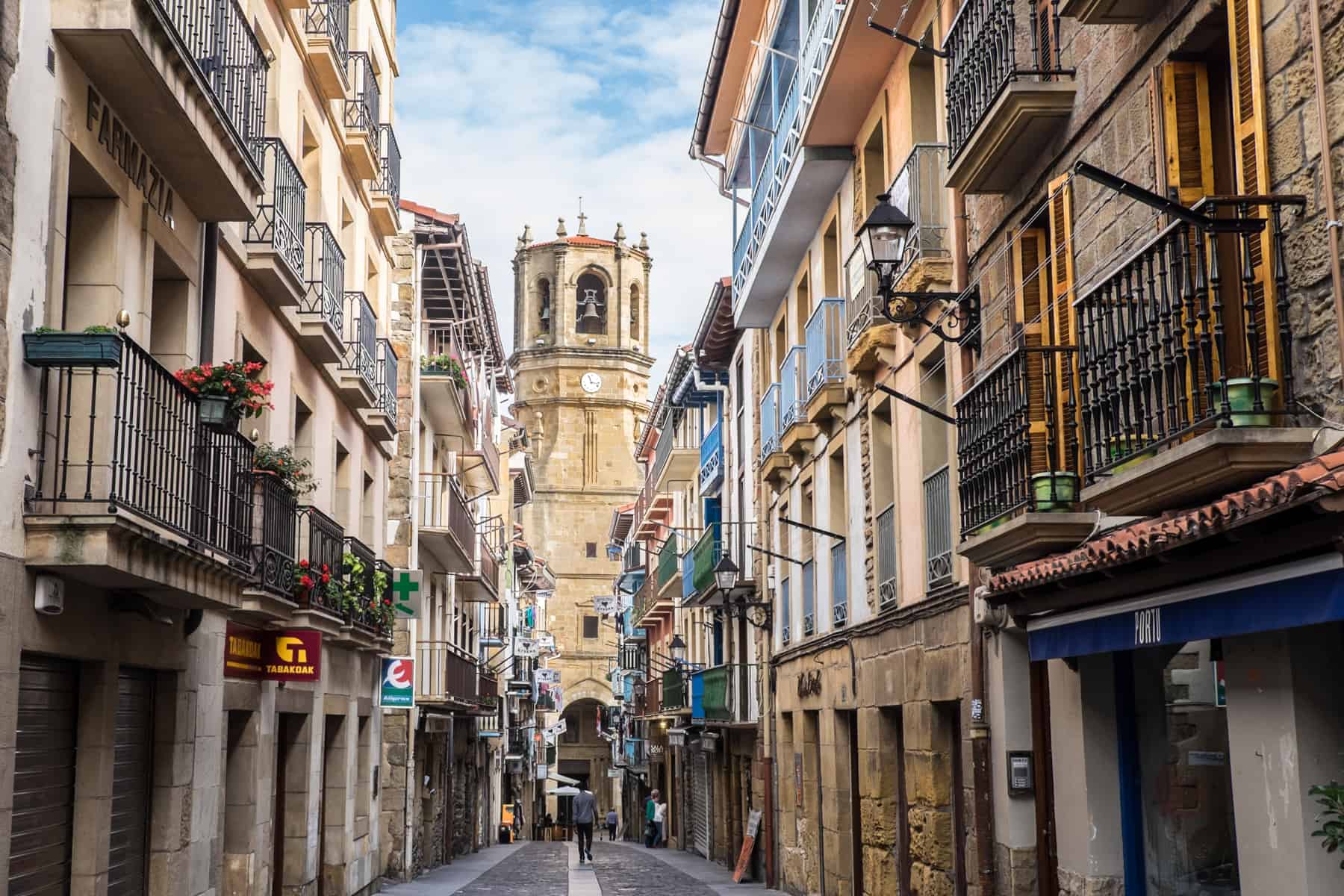
© VisitValencia
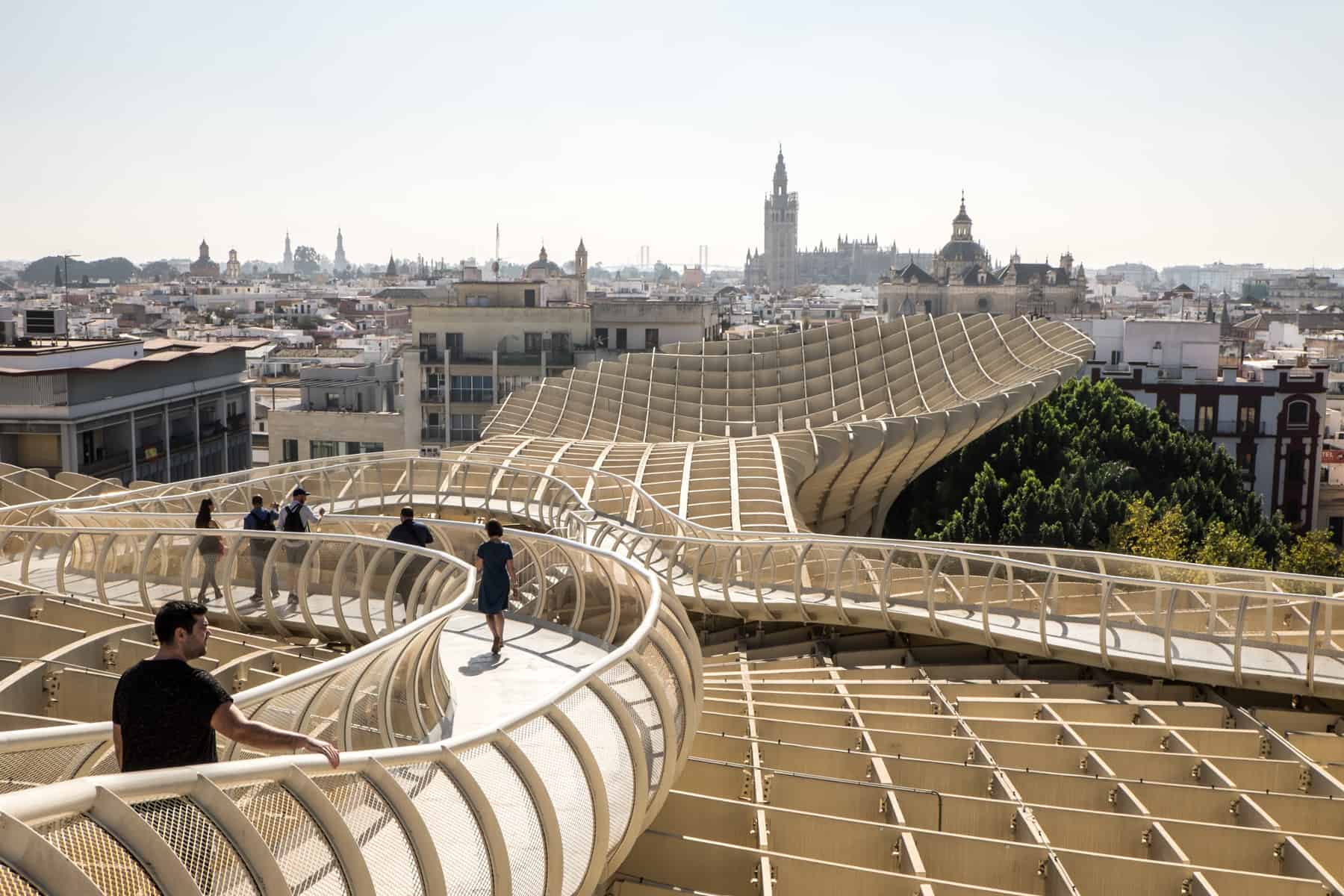
Madrid to Granada
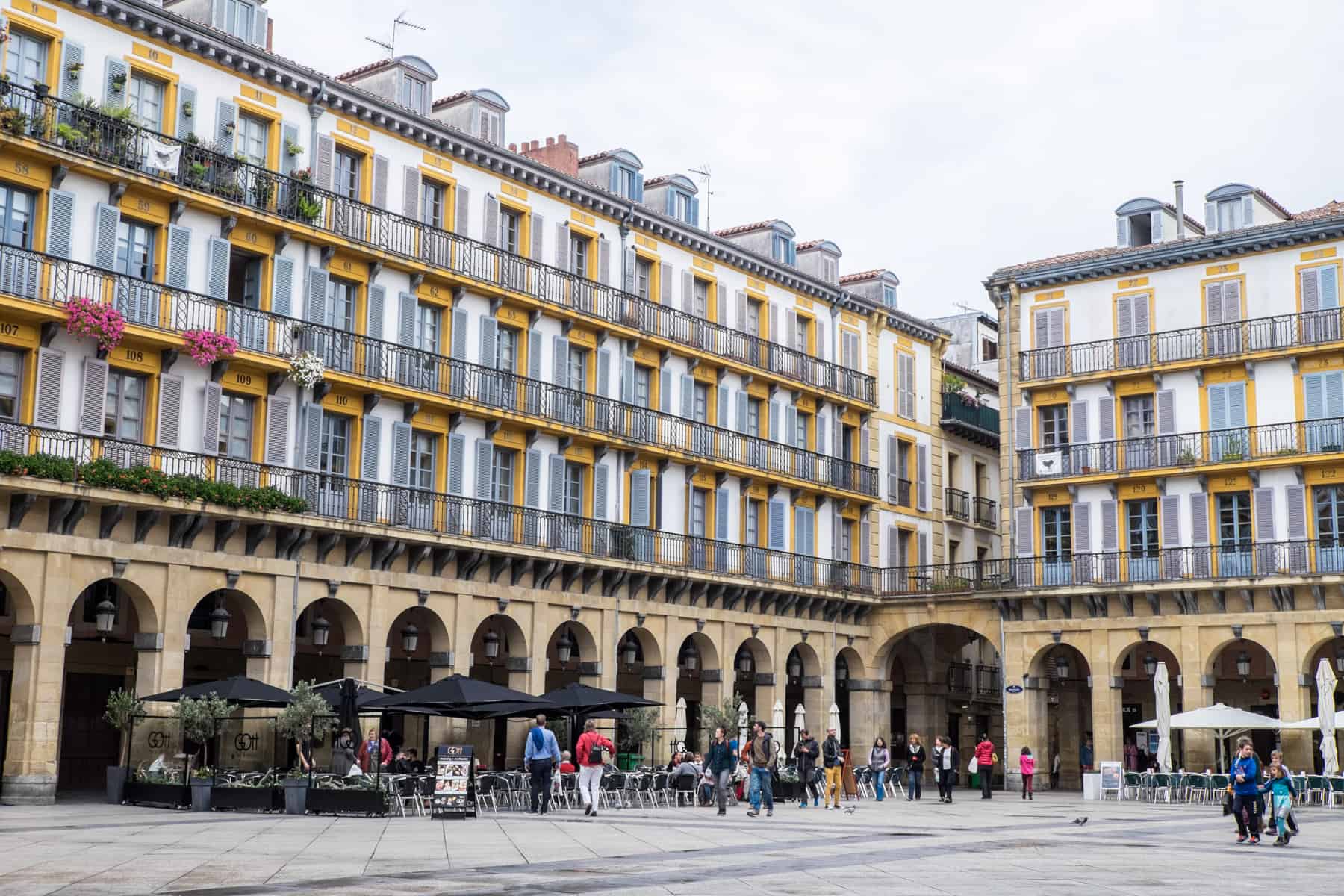
Short on time or looking for a different form of sightseeing? Excitedly tour Madrid in a nostalgic SEAT 600 or venture to the city’s highlights on the hop-on-hop-off bus.
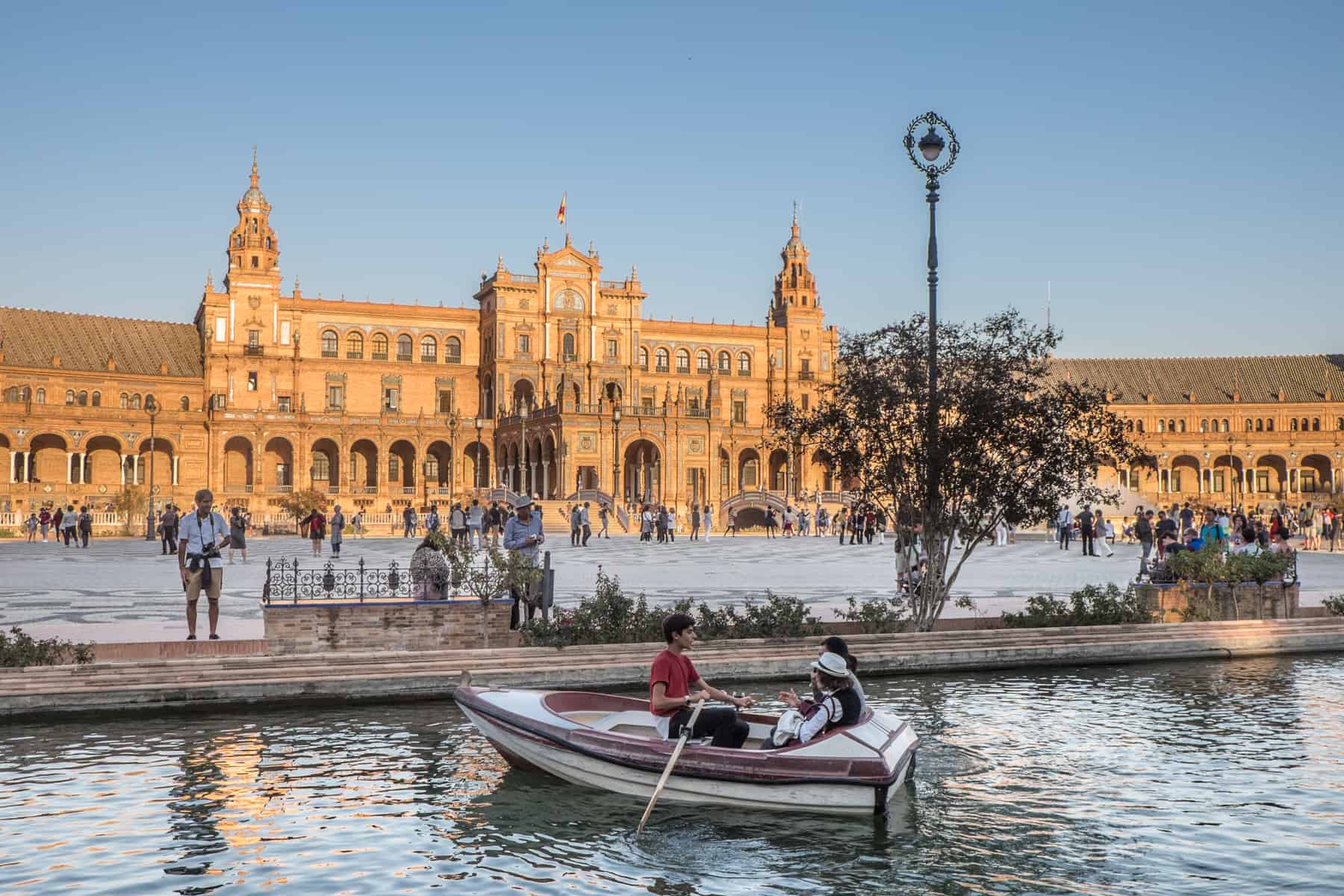
Madrid to Malaga
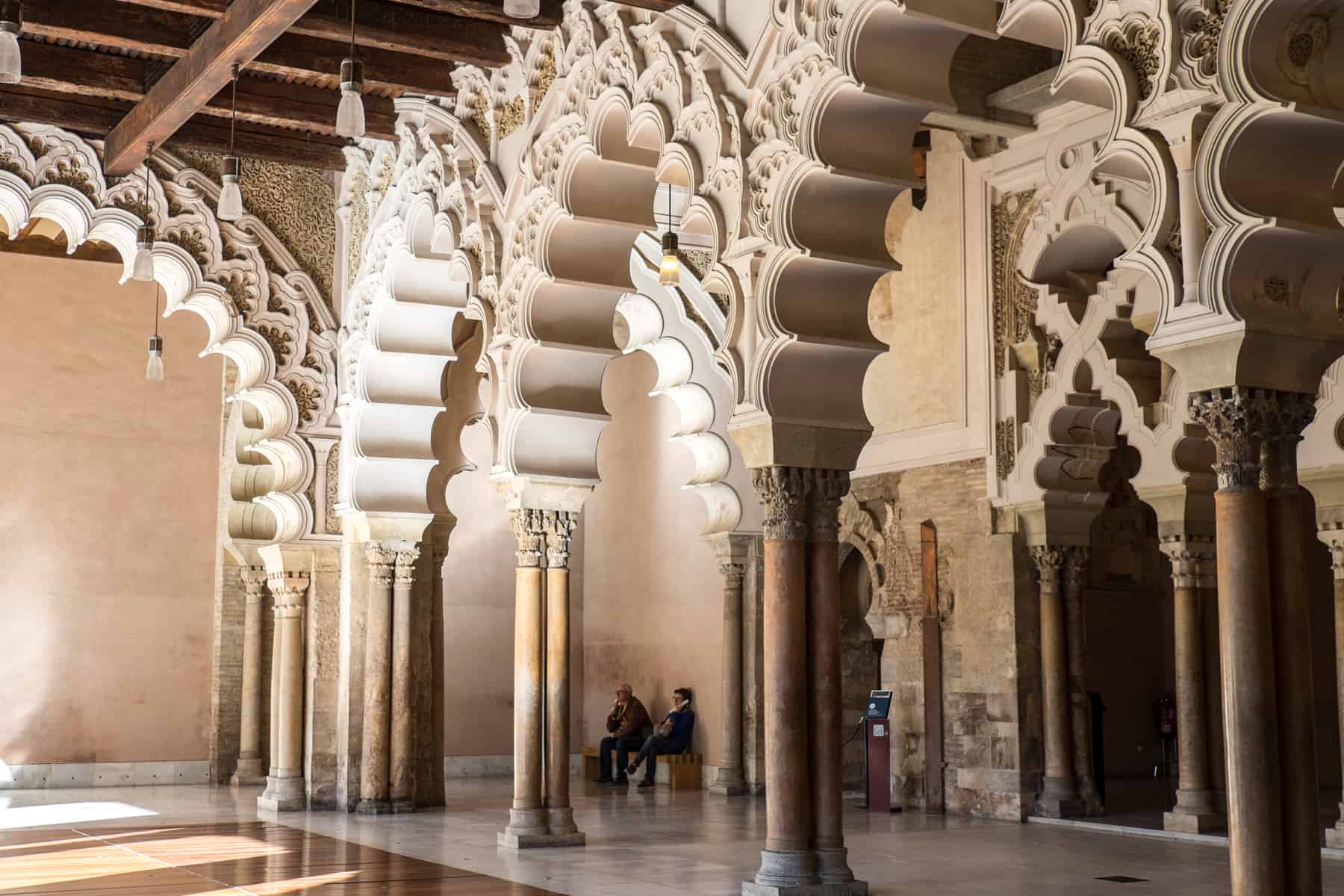
Visit Zaragoza, Spain – World Heritage, Legacy and Urban Revival
Beyond Madrid, planning a myriad of Spain trips ultimately comes down to what city to choose, also factoring in travel time and ticket budget. To help you shortlist, I have gathered a selection of my personal highlights, the most searched for city trips by train from Madrid on the Renfe rail site, and the most remarkable places to go in Spain that set the stage of Spanish culture, history and landscape.
Disclaimer: This post contains affiliate links to handpicked partners, including tours, gear and booking sites. If you click through or buy something via one of them, I may receive a small commission. This is at no extra cost to you and allows this site to keep running.
A visit to the northern Spanish coastal city of San Sebastian (Donostia) lands you in a very distinct region of Spain. A gastronomically acclaimed city, awash with Old Town architecture from Baroque basilicas to Belle Époque buildings, filled with music, the arts and home of Balenciaga, and the root of some of the oldest traditions and language in Europe from the Basque heritage.
Tips for Planning Spain Trips
When to Go
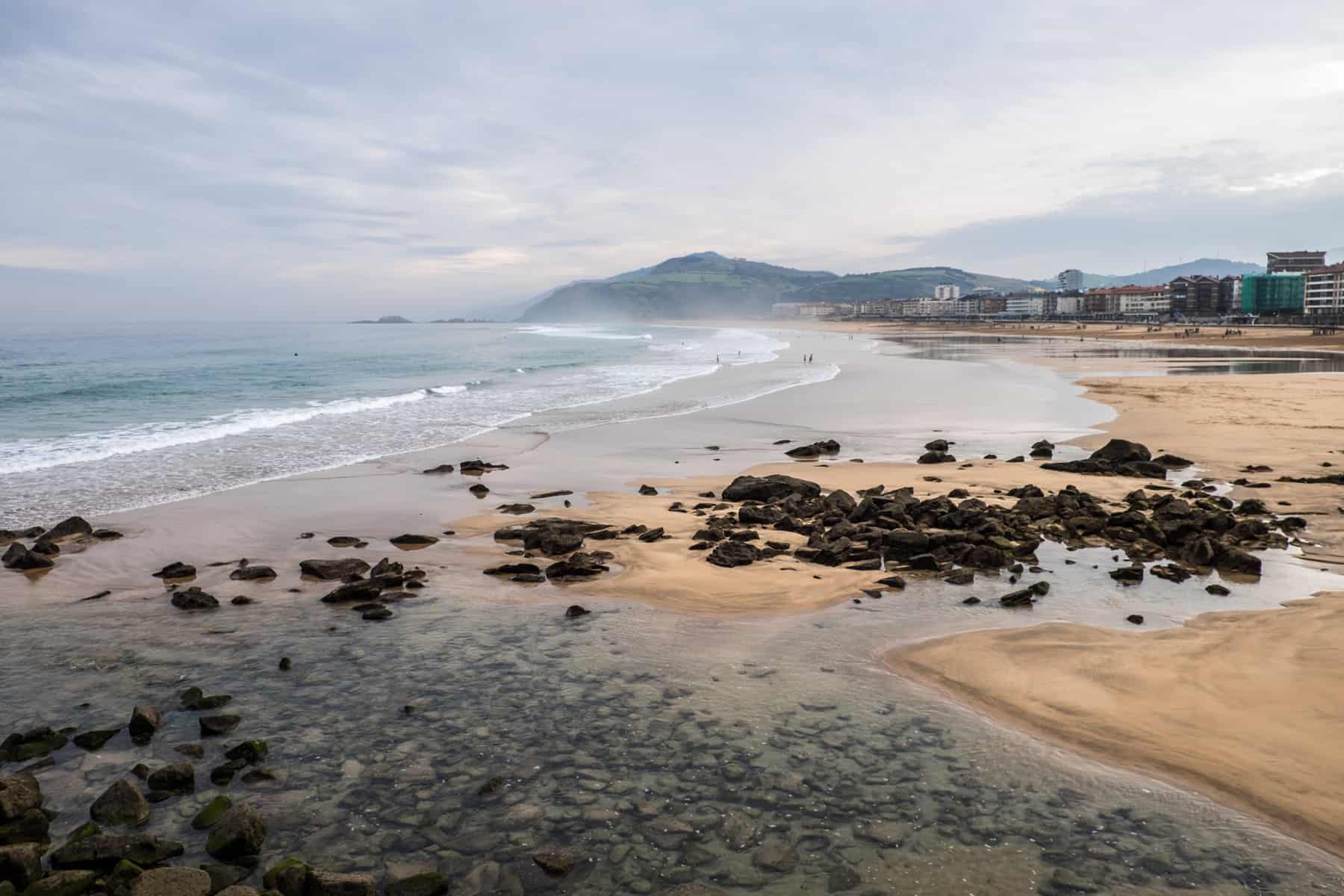
Travelling from Madrid by Train
- All train tickets for the AVE rail network have to be pre-booked since you can’t turn up on the day and book at the station. You can show tickets electronically via a smartphone. There are nine classes, of which Turista (a second class option with 2 x 2 seating rows) and the more spacious Turista Plus (with 2 x 1 seating rows) are the most common and cost-effective.
- If you are booking a multi-stop trip, consider getting a ‘Spain Pass’. This means you can travel using just one ticket for the AVE and other long-distance trains. You must reserve a seat before every trip, as limited space is assigned for Spain Pass holders.
Pin It for Future Planning
Barcelona steals the limelight for those planning to visit Spain’s north-eastern Catalonia, but consider the neighbouring city of Girona, whose walled quarters and narrow streets take you on a journey spanning over 2,000 years. The secluded beaches of the Costa Brava are just 30 minutes away.
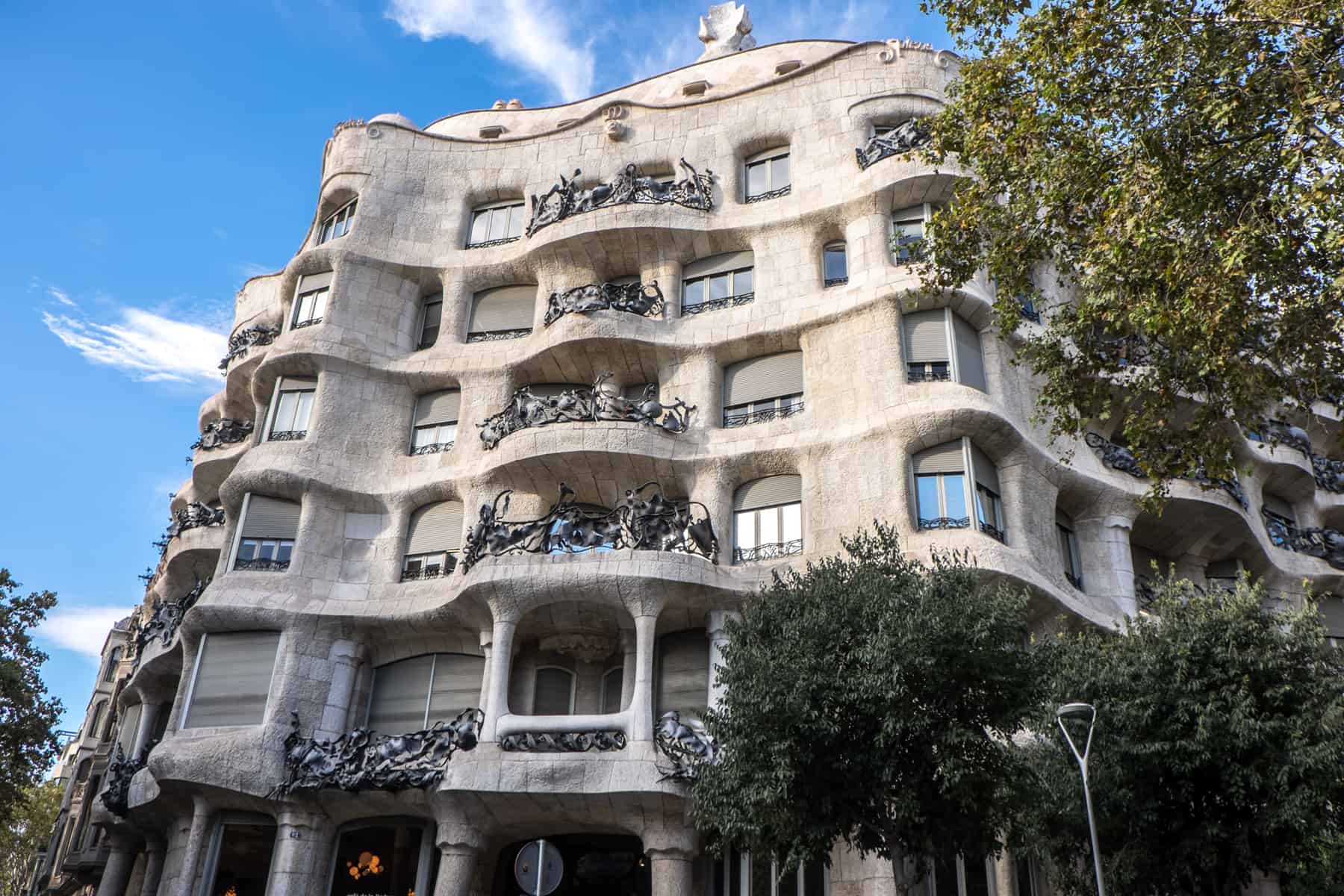
READ MORE: Travel in Spain by Train: AVE Guide
